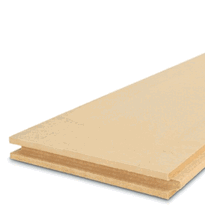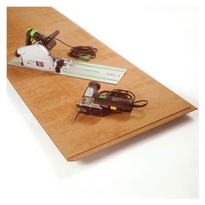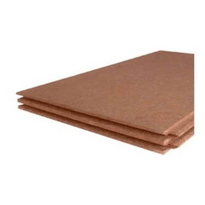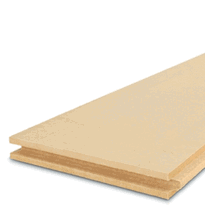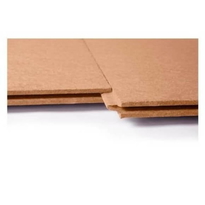Material Composition and Core Features of Wood Fibre Sarking Boards
Material Composition and Core Features of Wood Fibre Sarking Boards
Wood fibre sarking boards are predominantly made from sustainably sourced wood fibres, which are processed into high-density, porous materials designed to offer excellent insulation and durability. These fibres are carefully derived from responsibly managed forests, ensuring environmentally sustainable practices. These boards are fully recyclable, supporting green building initiatives. Their natural composition contributes to a healthy indoor environment. The high-density structure enhances sound absorption, while the porous nature permits water vapour to pass through freely. This helps to reduce moisture build-up and minimise the risk of condensation, contributing to healthier building interiors. Certain products, such as Beltermo Top, are manufactured using a dry-process method, which boosts thermal performance without reliance on adhesives. In contrast, other boards like STEICOuniversal may incorporate adhesive binding. Features such as tongue and groove profiles enable tight, airtight installations. The lightweight yet rigid construction facilitates straightforward handling and fitting.
Benefits for Energy Efficiency and Weather Resistance
Benefits for Energy Efficiency and Weather Resistance
Due to their inherent properties, wood fibre sarking boards significantly enhance a building’s energy efficiency by providing effective thermal regulation. This helps maintain stable indoor temperatures and reduces the need for additional heating or cooling systems.
The insulation performance of these boards offers several advantages:
-
Improved thermal insulation ensures that buildings remain warm in winter and cool in summer, lowering energy consumption.
-
Temperature stability reduces fluctuations, decreasing reliance on HVAC systems and thus lowering energy bills.
-
Long-term performance is achieved through their durable composition, which maintains insulation qualities over time and promotes ongoing energy savings.
Furthermore, their breathability naturally manages moisture and prevents dampness, helping to protect the structure from weather-related damage. Their natural breathability also supports healthy indoor air quality. This function also contributes to the overall environmental sustainability of the building by utilising renewable resources.
Installation Options and Suitable Applications
Installation Options and Suitable Applications of Wood Fibre Sarking Boards
Installation options for wood fibre sarking boards are designed to ensure secure attachment, weather resistance, and ease of integration into various building structures. The boards feature a tongue and groove edge profile, enabling straightforward, tight-fitting installation that enhances wind tightness. Fixation can be achieved using nails or staples, with counter-battening providing additional stability, particularly over wider spans.
In many cases, boards can be directly applied onto rafters without the need for additional support, simplifying construction processes.
For enhanced durability, it's important that vertical joints are offset by at least 600 mm, and that joints in adjacent compartments are aligned correctly. These boards are suitable for use on rafters, exterior walls, and roofing, especially in exposed locations, owing to their weather-resistant and thermally effective properties.
Their compatibility with insulation materials, OSB boards, and air-tightness membranes further broadens their range of practical applications.
Environmental and Safety Advantages of Using Wood Fibre Boards
The environmental and safety benefits of wood fibre boards arise from their manufacturing processes and inherent material characteristics, which collectively support more sustainable and health-conscious building methods. These boards are made using renewable resources, such as recycled wood or sustainably managed forests, often with the aid of renewable energy during production, thereby helping to reduce their carbon footprint. Manufacturing processes often utilize renewable energy, further reducing environmental impact. Some key advantages include:
-
They're free from harmful additives, as natural bonding agents like lignin are used, which prevents the release of toxic emissions.
-
Their porous structure offers excellent moisture management, helping to minimise issues related to dampness and mould growth.
-
Certified by organisations such as FSC or PEFC, they adhere to sustainable forestry practices, ensuring ecological responsibility and conservation.
These features make wood fibre boards a safe and environmentally friendly choice, promoting healthier indoor environments and supporting sustainable construction standards across the UK.
Conclusion
Wood fibre sarking boards provide a sustainable, environmentally friendly solution that enhances building performance through excellent insulation, weather resistance, and breathability. Their simple installation methods suit a variety of construction applications and contribute to improved energy efficiency. Additionally, their natural composition reduces health hazards and lowers environmental impact. Overall, these boards are a practical choice for builders seeking durable, safe, and eco-conscious materials that meet modern building standards efficiently.
